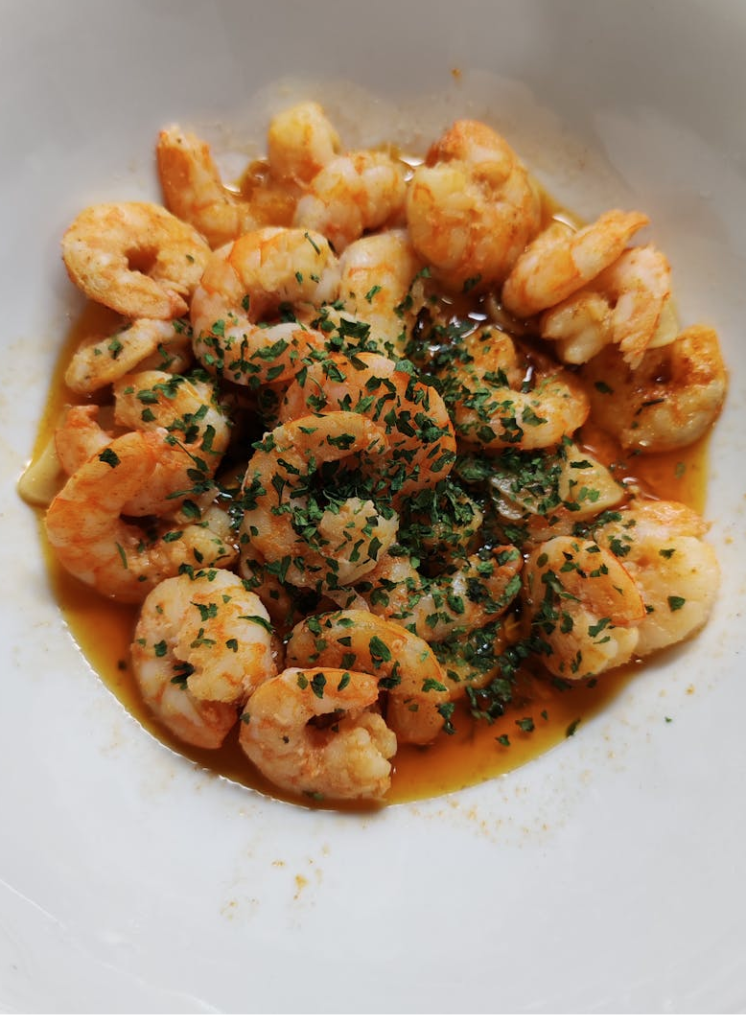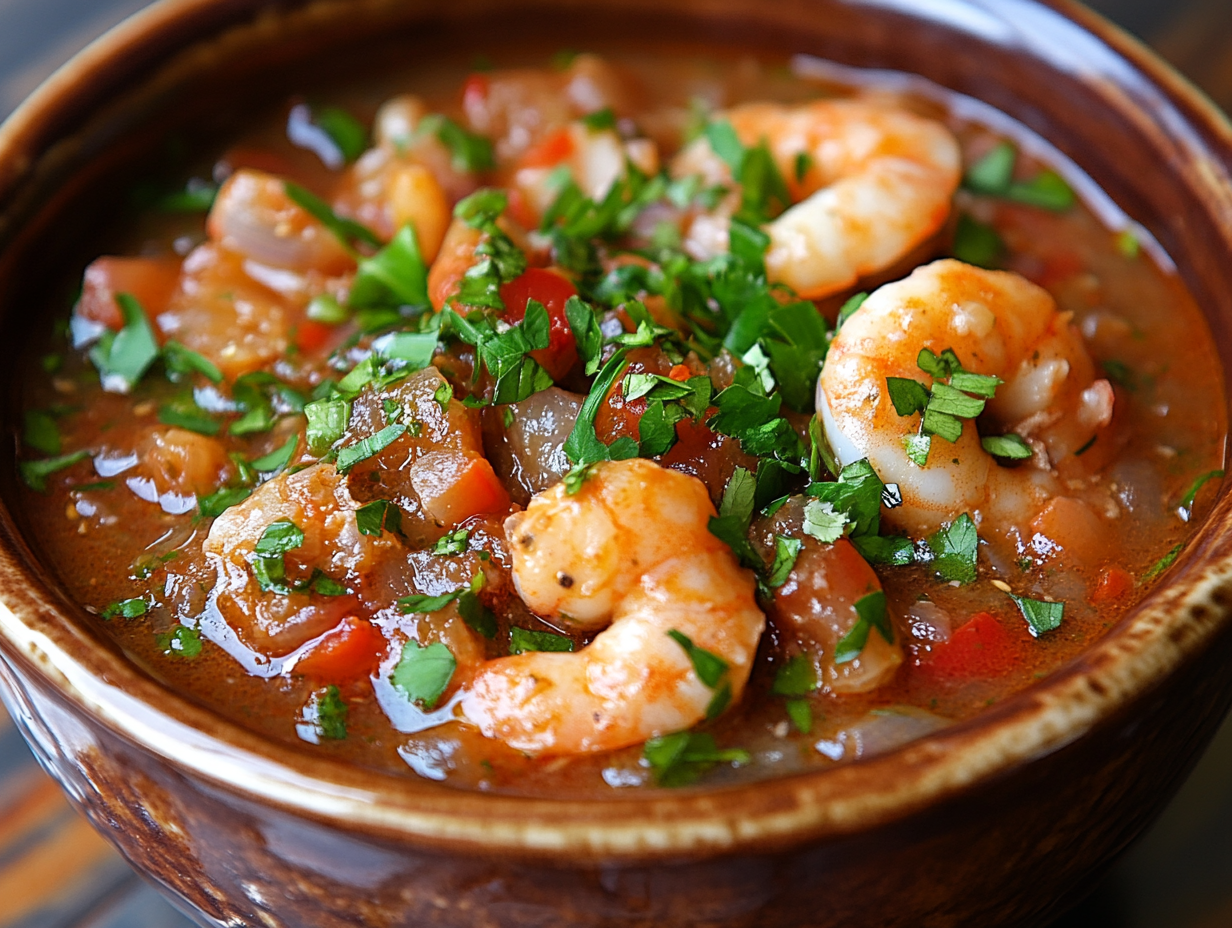Table of contents
- What Is Louisiana Seafood Sauce? A Complete Guide to This Flavorful Southern Delight
- \ The Origins of Louisiana Seafood Sauce
- What Is Louisiana Seafood Sauce Made Of?
- How to Make Louisiana Seafood Sauce at Home
- Serving Suggestions for Louisiana Seafood Sauce
- Variations of Louisiana Seafood Sauce
- FAQs about Louisiana Seafood Sauce
- Conclusion
What Is Louisiana Seafood Sauce? A Complete Guide to This Flavorful Southern Delight
Louisiana is famous for its vibrant and flavorful cuisine, and one dish that truly stands out is Louisiana seafood sauce. Whether you’re enjoying a crawfish boil, fried shrimp, or grilled fish, this sauce brings an extra layer of flavor that enhances any seafood dish. But what exactly is Louisiana seafood sauce, and why is it so popular?
In this guide, we will explore the origins of this sauce, its key ingredients, and how you can make your own at home. By the end of this article, you’ll understand what makes Louisiana seafood sauce so unique and how it perfectly complements the rich variety of seafood found in Southern cooking.
\The Origins of Louisiana Seafood Sauce
Louisiana seafood sauce is a product of the rich culinary traditions of the state, which draws influences from Cajun and Creole cultures. These communities have long histories of utilizing local seafood, particularly in the coastal regions where shrimp, crab, crawfish, and oysters are abundant.
Cajun and Creole Influence

The two most prominent culinary traditions in Louisiana, Cajun and Creole, have significantly shaped the ingredients and flavors of Louisiana seafood sauce. Cajun cooking typically uses bold, earthy spices, while Creole cuisine incorporates a more refined blend of French, Spanish, and African influences. These traditions come together in the seafood sauce, combining the robust flavors of spices with a balance of tanginess and freshness.
For a detailed look at Cajun vs. Creole seasoning, check out this seasoning guide to see how these two styles influence different dishes.
What Is Louisiana Seafood Sauce Made Of?
While recipes for Louisiana seafood sauce can vary, most versions include a few core ingredients that give it its distinctive flavor. These ingredients create a balance of richness, spice, and acidity, making it a versatile sauce for various types of seafood.
1. Mayonnaise or Butter
The base of Louisiana seafood sauce can be either mayonnaise or butter, depending on the version of the sauce you’re making. The mayonnaise-based sauce is creamier, while the butter version is richer and ideal for hot seafood dishes like shrimp boils.
- Why It’s Important: The base provides the texture and body of the sauce, helping the other flavors cling to the seafood. It also adds richness that balances out the spiciness and acidity.

2. Mustard
Louisiana seafood sauce often includes mustard, typically Creole mustard, which is known for its coarse texture and bold flavor. Mustard adds a tangy element that cuts through the richness of the sauce.
- Why It’s Important: Mustard gives the sauce its characteristic tang and sharpness, essential for balancing the heaviness of fried or boiled seafood.
3. Hot Sauce
A defining characteristic of Louisiana seafood sauce is its heat, which often comes from hot sauce, particularly Louisiana-style hot sauces like Tabasco. These hot sauces are typically made from fermented peppers, giving them a sharp, tangy heat.
- Why It’s Important: Hot sauce provides both heat and acidity, which are key components in cutting through the richness of the sauce and enhancing the flavors of the seafood.
For a more in-depth exploration of Louisiana’s famous hot sauces, check out this post on hot sauces for more information on their history and varieties.
4. Lemon Juice
Fresh lemon juice is often used to add a burst of acidity to the sauce. The citrus notes lighten the overall flavor and provide a refreshing contrast to the richer ingredients like mayonnaise or butter.
- Why It’s Important: The acidity from lemon juice helps to balance the heaviness of seafood, especially fried or butter-soaked varieties.
5. Cajun or Creole Seasoning
Of course, no Louisiana dish would be complete without Cajun or Creole seasoning. These blends typically include ingredients like paprika, garlic powder, onion powder, thyme, and cayenne pepper, providing a depth of flavor and a slight kick.
- Why It’s Important: This seasoning mix defines the flavor profile of the sauce, giving it the signature smoky, spicy taste that pairs so well with seafood.
6. Worcestershire Sauce
A splash of Worcestershire sauce is often added to provide a savory, umami element to the sauce. This English-origin sauce has been adopted into Louisiana cooking due to its complex flavor and ability to deepen the richness of the sauce.
- Why It’s Important: Worcestershire adds depth to the sauce, with its mixture of vinegar, molasses, and anchovies enhancing the overall complexity of the flavor.
7. Garlic
Garlic is a staple in most Louisiana recipes, and seafood sauce is no exception. Freshly minced or finely chopped garlic adds a savory, aromatic component that complements the spiciness and tanginess of the sauce.
- Why It’s Important: Garlic gives the sauce an added layer of flavor and complexity, balancing out the spices and acidity.
How to Make Louisiana Seafood Sauce at Home

Making Louisiana seafood sauce at home is easy and allows you to adjust the ingredients to your liking. Here’s a basic recipe you can use:
Ingredients:
- 1 cup mayonnaise (or 1 stick melted butter for a butter-based sauce)
- 1 tablespoon Creole mustard
- 1 tablespoon lemon juice
- 1 teaspoon Worcestershire sauce
- 2 teaspoons Cajun or Creole seasoning
- 1 tablespoon hot sauce (Tabasco or any Louisiana-style hot sauce)
- 2 cloves garlic, minced
- Salt and pepper to taste
- Fresh parsley, chopped (optional for garnish)
Instructions:
- Mix the Base
In a medium-sized bowl, combine the mayonnaise (or melted butter) with the mustard, Worcestershire sauce, and lemon juice. Stir until fully blended. - Add the Seasonings
Add the Cajun seasoning, hot sauce, and garlic. Stir to combine, making sure all ingredients are well incorporated. - Adjust to Taste
Taste the sauce and adjust seasoning as needed. If you like it spicier, add more hot sauce. For more tang, add additional lemon juice or mustard. - Serve
Transfer the sauce to a serving dish and garnish with freshly chopped parsley if desired. Serve with your favorite seafood dishes like boiled shrimp, crab, or fried fish.
Serving Suggestions for Louisiana Seafood Sauce
1. Dipping Sauce for Fried Seafood
One of the most common uses for Louisiana seafood sauce is as a dipping sauce for fried seafood, such as fried shrimp, catfish, or oysters. The tangy and spicy sauce cuts through the richness of the fried batter.
2. Topping for Grilled or Boiled Seafood
You can also drizzle this sauce over grilled or boiled seafood. It works particularly well with shrimp, crab, crawfish, and even grilled fish fillets. The combination of heat and creaminess enhances the natural flavors of the seafood.
3. Paired with Seafood Boil
This sauce is a perfect complement to a traditional Louisiana seafood boil. Whether you’re boiling shrimp, crawfish, or crab, this sauce adds an extra layer of flavor that enhances the experience.
For more seafood boil recipes, visit our complete guide to seafood boils.
Variations of Louisiana Seafood Sauce

Louisiana seafood sauce can be customized in numerous ways, depending on your taste preferences and the type of seafood you’re serving. Here are a few variations you can try:
1. Spicy Louisiana Sauce
To turn up the heat, add extra hot sauce or a dash of cayenne pepper to the mix. This version is perfect for those who love a little extra kick in their sauce.
2. Creamy Louisiana Sauce
For a creamier version, you can mix in a bit of sour cream or heavy cream with the mayonnaise base. This variation is smoother and pairs well with milder seafood dishes like grilled fish or crab cakes.
3. Smoky Louisiana Sauce
Add a teaspoon of smoked paprika for a smoky twist. This version adds depth and works particularly well with grilled seafood or smoked fish.
FAQs about Louisiana Seafood Sauce
Q: Can I make Louisiana seafood sauce ahead of time?
Yes, you can prepare the sauce up to two days in advance. Store it in an airtight container in the fridge, and stir before serving.
Q: Can I use butter instead of mayonnaise in the sauce?
Yes, a butter-based version of the sauce is just as delicious, especially for hot seafood dishes. Melt the butter and follow the same recipe for a rich, smooth sauce.
Q: What seafood pairs best with Louisiana seafood sauce?
This sauce works well with a variety of seafood, including shrimp, crab, crawfish, catfish, and grilled fish. It also makes a great dip for fried oysters or calamari.
Q: How long does Louisiana seafood sauce last in the fridge?
The sauce can be stored in the fridge for up to three days in an airtight container.
Conclusion
Louisiana seafood sauce is a flavorful, tangy, and spicy addition to any seafood meal. Whether you’re enjoying a classic crawfish boil or serving up fried shrimp, this sauce brings out the best in Southern seafood dishes. With its blend of mayonnaise or butter, mustard, hot sauce, and Cajun seasonings, it’s a versatile and easy-to-make sauce that can be tailored to suit your preferences.
Give it a try at your next seafood feast and discover why it’s such a beloved staple in Louisiana cuisine!

